RO stands for reverse osmosis. RO/DI refers to reverse osmosis Deionization which is similar to reverse osmosis but equipped with an extra DI stage where filtration happens to reduce the amount of total dissolved solids to zero.
While the RO system works best for freshwater aquariums, rodi system is suitable for mixing saltwater and replenishing freshwater lost due to evaporation taking place in a marine aquariums or for your reef tank.
After a lot of research, we feel that the best RODI system for reef aquariums is the AquaFX Barracuda.
A four-stage reverse osmosis system has the four basic stages for filtering water down to 0 TDS. This gives pure water containing no dissolved impurities suitable for your aquarium.
However, if you live in areas with highly contaminated water, it would be advisable to get the best 5 stage or 6 stage rodi filtration system equipped with an extra carbon composite or an additional DI stage.
Such tools have gone through a test and proven to be efficient and reliable in the filtration process. Through the application of modern technology there has been a significant improvement in the filtration process.
The process yields virtually 100% pure water. You can easily purchase the best rodi system for your saltwater aquariums or reef tank giving clean tap water.
Notably, it is crucial, ensuring you get the best reverse system for pure aquarium water. Otherwise, it might end up not giving you the expected results. This article shares some essential guides and reviews to enable you to pick the best reverse systems to fit your reef tank or aquariums needs to yield clean tap water for use in your aquarium.
Table of Contents
- 9 Best RO-DI systems for reef aquariums
- RODI Systems for Aquariums: buying guide
- More info about RODI Systems
- Conclusion: The Best RODI System?
9 Best RO-DI systems for reef aquariums
1. AquaFX Barracuda RO/DI System
As experts in water filtration and treatment systems, AquaFX has created top of the line of water treatment and filtration systems for home and business reef aquarium enthusiasts.
The AquaFX Barracuda is one of the best filtration systems for aquarium owners on the market today. The Barracuda features a 4 stage 2-micron chlorine guzzler carbon block filter to keep your water as purified from contaminants as possible.
Additional features include: a high flow and high rejection TFC membrane, your choice of a feed adaptor, a high-efficiency color-changing DI cartridge 160 PSI pressure gauge that is marked with operating gauges and unsafe range detectors.
All these features give you the ability to accurately and regularly monitor the water within the tank for any unsafe range spikes. Additionally, each system is built with a solid aluminum “no-rust” metal mounting bracket that has clear 10″ filter cartridge housings, quick connect fittings and shut off valves for easy use.
Pros
- Equipped with high flow and rejection TFC membrane
- Equipped with a pressure gauge
- High filtration efficiency
- Easy cartridge replacement
- No leakages
- Easy installation
- best way of getting RO water
- The build up is excellent
Cons
- Has limited warranty
- Complete with a Chlorine Guzzler Carbon Block Filter
- Includes an AquaFX High Flow and High Rejection TFC Membrane
- Pressure Gauge is essential for determining efficiency
- 100 GPD (Gallons Per Day)
- Solid Aluminum Bracket
2. Koolermax AR-122 RO/DI System
The Koolermax AR-122 is a 6-stage rodi system featuring an RO unit, a pressure gauge, all required filters, the hardware needed for installation, an auto shut off valve and a pressure gauge. The design of this system allows it to purify tap water to suit a reef aquarium.
When your pressure shows a drop of 15 psi or greater, it means you need to change your filters as they are clogging up. The filters are 5 micron sediment filters with a multi layer. The outer layer features 20 micron while the inner layer is 5 micron, This will result in the filter holding more dirt and sediment. Also, the 5 micron coconut shell carbons have a greater removal rate for both chlorine and chemicals.
This system features a 4th stage osmosis membrane. This membrane has the capability to removing 90 to 95 per cent of the minerals in the water. Now, if the water supply shows total dissolved solids in the reading that are 300 ppm, the output of water will be purified to 15 to 30 ppm after only the fourth stage.
There are also two inline DI filters that will both reduce the waters mineral count, and purify the water to an even greater degree after the fourth stage. During the fifth and sixth stages, the total dissolved solids are reduced from 15 ppm to zero, or close to zero, ppm.
This is a ready for installation, complete system. All filters, tubing and installation hardware are included. Since the filters for this system are high capacity, both the pre-filters and post filters only need to be replaced once a year. This system comes with a one year limited warranty for the parts and components.
Pros
- The system comes complete with all filters
- High efficiency purification
- Reliable and guaranteed performance
- Easy to install
Cons
- Resin is too small
- The filters are expensive
- Filters are only available at koolermax
- 6 stage RO DI water system for Aquarium, aeroponics, misting, hydroponics, ultra pure water applications
- Use high capacity 150GPD RO membrane and generate 120 gallons per day on average household water supply pressure
- 1st stage sediment filter, 2nd & 3rd stage carbon filter, 4th stage TFC-150 RO membrane, 5th & 6th stage color changing DI filters
- The system comes complete with all filters, tubing, instruction, under-the-sink installation hardware and extra garden hose adapter
- This system is designed and assembled in Santa Ana, CA, USA. We have been making RO systems for 23+ years. The systems we built are reliable and guaranteed to perform
3. SpectraPure MaxPure RO/DI System
SpectraPure MaxPure is able to remove sediment particles that are as small as 1 micron across. This is equivalent to less than 1/25,000 of an inch. The ability to filter out particles this small makes it possible to filter out some types of bacteria. Not only can MaxPure do a great job of filtering water, but it can also filter a large volume of water.
In fact, it is able to purify as much as 90 gallons per day. This is enough for even the largest of home aquariums. Some museum aquariums and pet stores could make use of the MaxPure.
The system is also designed to be transportable. In fact, it is only 15x7x16 inches. While the device itself is relatively small, there is plenty of tubing to ensure that you are able to place it somewhere convenient for you. The MaxPure is effective and reliable.
Pros
- Gives ultra-pure tap water
- best for salty water
- Eliminates small impurities including chlorine
- Occupies a small space
- Leak free fittings
- Durable filters
- BPA free
4. LiquaGen Aquarium Reef RO/DI Water Filter System
It is a perfect option for fresh and salty water aquariums and other areas that need ultra-pure water for your reef tank. The pre-assembling makes it easy to install. The high rejection RO membrane yields 100 gallons of pure water daily.
It is a portable unit equipped with deionization cartridge which removes all the cations including sodium, calcium, copper, sulfate, iron and chloride anions. The stage RO membrane removes 99% of the total dissolved solids including arsenic, radium, bacteria and viruses.
No need to keep count on someone for your system. You will know its time to change the filters by the quality of water you get from the method
Pros
- best for salty or fresh tap water
- Eliminates small impurities including chlorine
- Leak free fittings
- Durable
- Easy to install
- Reduces TDS to zero
- portable
Cons
- Not equipped with auto-shut off valve
5. APEC Water Systems Ultimate RO-Hi
It is another top tier RO filter important for you if you if have large usage for pure water. The system comes with all that you need to set up without any need for special skills. The stages 1,2 and 3 have replaceable filters which you should change every six months. Like other RO filters, some of the incoming water is used to flush the RO membrane to create back pressure.
The amount of water used to flush the membrane varies depending on the water pressure of the incoming water. APEC water systems comes with a complete RO fittings with clear instructions manual for ease of installation.
Pros
- Durable RO filter
- best performance
- Quick dispense
- Comes with premium faucet
- Metal and lead-free method
Cons
- has issues with leakages
- SUPREME QUALITY: Built with super long-lasting USA MADE filters, RO-Hi is a durable system that will last for decades. System is designed, engineered and assembled in USA to ensure water purity for good health
- WQA TESTED & APPROVED: Effectively removes impurities such as chlorine, taste, odor, VOCs, as well as harmful fluoride, arsenic, lead, heavy metals and 1000+ impurities. Provides unlimited ultra-fresh, clean, great tasting water right at home. Save money, time and hassle of buying costly, bottled water
- QUICK DISPENSE: Big 3/8” fast-flow output design increases the flow rate of water from tank to faucet. The higher water flow will allow you to fill up a glass or pitcher of water much faster. Reduces wait time when drawing and filling large pots of water for making soups or beverages.
- LIFETIME SUPPORT & SYSTEM COVERAGE: Provides peace of mind with our lifetime support by certified WQA water specialist. 2 years extended manufacturer coverage available upon registration.
- EQUIPPED WITH PREMIUM FAUCET & PARTS: Comes with metal, completely lead-free luxury designer faucet, plus JG Food grade tubing to provide safe, impurity-free pure water. The original, top-notch JG Quick Connect fittings for easy and secure leak-seal
6. Aquatic Life Twist-In 3-Stage Ro Unit
It has twist-in cartridges that make it easy and fast to replace the filters. The triple-sealed cartridges assure you of trouble free operation. The RO DI systems removes total dissolved solids and also changes color when its time to replace.
It comes equipped with all you need for ease of installation including tubing, drain connector and water supply connectors. The aquatic life twist in 100 GPD 3 stage RO DI deionization features pivoting cartridge heads making it perfect for small spaces. The filtration method reduces total dissolved solids in the water down to 1/10 000 of a micron reducing arsenic, parasitic cysts, lead and copper.
Pros
- Twist on cartridges for easy replacement.
- Triple sealed for trouble free installation
- Clear installation instructions
- Di resin removes total dissolved solids
- Equipped with everything for installation
- Convenient and compact RO
- Easy to install and use
Cons
- The float valve shakes the shutoff valve quite severely
- Twist-in cartridges for fast & easy replacement of Filter media.
- Triple-sealed cartridges ensure trouble-free operation. Sediment Filter, Carbon Filter, Membrane, Deionization Filter
- NEW YORK CITY ONLY - Due to high city water sediment, additional pre-filtration required before use.
- Di Resin removes Total dissolved solids and changes Color when it’s time to replace.
- Includes everything for installation: Tubing, water supply connectors, drain Connector.
7. LiquaGen Aquarium-Countertop Reverse Osmosis Water Filter System
Yet another great RO filter which is great for aquariums and other uses where pure water is a necessity. It is ideal for reef tanks, fresh and salty water. It is a suitable system ensuring clean water optimal for fish, marine life and plants.
It is a suitable if you are buying the first ro di filter to eliminate small impurities including chlorine.
It will give convenience as you can get all the water whenever you need it. It is super easy to install. The filtration process removes about 99% of the total dissolved solids and contaminants in the water.
The first filtration stage inline sediment filter, second stage carbon filter, third stage reverse osmosis membrane and the fourth stage inline resin cartridge filter do all the necessary filtration to obtain quality water.
Pros
- best system for aquariums
- Suitable for salty and fresh tap water
- Removes smallest impurities including chlorine
- Leak free fittings
- BPA free supplement for safe environment
Cons
- Not air-tight tested
8. FOUNTAINHEAD Water System RO/DI Reef System
The Fountainhead water system is equipped with resin which is necessary for reducing total dissolved solids as the last stage of the unit. You won’t need to use expensive proprietary DI cartridge, a refillable DI cartridge and fill DI resin will do.
The clear cartridge is refillable hence saving on the cost. It uses filters which are double the size of portable inline units.? You can easily change the filters and the system is modifiable if you need to upgrade. It comes with a manual flush which prevents it from clogging due to TDS. The clear housing allows you to monitor the condition of the filters.
Pros
- DI resin removes total dissolved solids.
- The clear cartridge is refillable
- Clear housing to let visually monitor the condition of the filters
- The filters are easy to change
- The system is modifiable for upgrading
- Excellent quality system
- Gives quality water consistently
- Equipped with automatic shut off valve
- Easy set and use
9. LiquaGen Portable Reef & Drinking Water Filter System
It is a pre-assembled system equipped with two outlets which allows dual use. The first outlet gives quality water for your household uses. The second outlet is useful for aquariums and other uses requiring pure water.
LiquaGen restores minerals lost during the ro di systems improve the quality of the clean water to make it suitable for human development.? The pre-assembling makes it easy to install taking only about 10 minutes.It comes equipped with all tubes, fittings, wrench and a garden hose adaptor- virtually all you need to get pure water. The unit waste 3 gallons of water for every gallon of pure water.
Pros
- Pre-assembled for easy installation
- Restores minerals lost in the RO process
- High rejection RO membrane
Cons
- equipped with short hoses
RODI Systems for Aquariums: buying guide
Buying the best rodi system can be a daunting task. You might be lost deciding which is the best rodi system that will work for you. Therefore you will need to understand what it takes to get the best rodi system what will serve your needs. Here we discuss the main factors to look at.
Why do you need an RODI system?
Do you need the best rodi systems for your aquarium? One of the requirements for keeping a reef tank or aquarium is by having an rodi unit for your reef tank. rodi systems is a water clean up system; therefore, by using it harmful substances such as heavy metals, silicates, and chlorine aren’t introduced to your reef tank or aquarium.
The rodi water is available at fish stores; therefore, as a salty tank owner, you might be wondering if you need to buy the system. However, there are several reasons why you should purchase the system. They include:
It gives insurance
If anything isn’t right with your tanks and it fails to work , starts leaking, or needs a large quantity of water, the rodi systems will give you the peace of mind you need as it gives adequate gallons per day. Without the rodi systems, you would need more storage space, which leads to congestion.
You would also be straining due to inadequate water. Therefore, the tank is handy in giving your peace of mind that all the water you need is within your reach.
It saves money
It appears cheap buying the RO/DI water for 25 cents per gallon. However, you rarely think about the time you spend driving to the local fish store. Also, there are chances of running out of the water. You would love to save some few bucks.
By going to the local fish store, you get tempted to buy other things that come calling your name right at the entrance. Eventually, you end up buying four or more items. If only you have the RO/DI systems in your house, there will be no temptation and thus saving you money.
You have the control
By owning RO/DI system, you will know when to change the filters and how the process of cleaning water can be easy. You won’t need to count on someone to keep the system running. You change the filters on your own and determine how clean the water is coming out of the system.
A quality RO/DI system isn’t cheap to install, but they save you a lot in the long run. You have everything you need right at your disposal.
Filtration stages
Do you need a DI? one of the best ways for caring for your aquarium is through the continuous provision of clean water. pure water is the best environment for the aquarium reef and therefore a basic necessity. To keep constant supply for topping, you will require a lot of water.
The price of the containers and the heavy purified water are some of the compelling reasons why you should have a reverse osmosis system with a deionization cartridge filter. RO and DI play a vital role of removing impurities from your water.
However, DI purifies the water using the principle of ion exchange to wipe out contaminants in water. Typically, the RO system is a well-rounded filtration system that cleans the majority of impurities,the additional DI filter ensures you get water that is 99.% pure. The additional filtration system to the 3 stages reverse osmosis unit makes up he 4-stage reverse/ deionization unit. The four stages filtration involve:
Stage 1– it is the sedimentation stage. solids including dust, rust and silt are removed. This protects the carbon filter too.
Stage 2– it consists of activated carbon filters that remove chlorine and other impurities from the water ahead of the reverse osmosis membrane. They also protect the membrane.
Stage 3– it involves the removal of organic and inorganic compounds including fluoride and reducing total dissolved solids from the water. It also reduces copper, parasitic cysts, lead, and arsenic.
Stage 4– consists of the color-changing resin DI filter that removes total dissolved solids from the water. After the water passes through this membrane, only a minimal amount of dissolved solids remains in the water. However, for it to be used in the reef aquarium, removing any remaining TDs from the water is vital.
It is done by filtering the water through a resin, charged with cation and ion resins. The resin absorbs the TDs and it changes the color from blue to amber as it gets exhausted. Once you realize all the resin has changed the color, then it is time to change the filter- through visual aid; you can tell when the replacement is necessary.
Ease of installation
Many of the reverse osmosis deionization systems will take only a few of your minutes to install and start getting purified water. All the plumbing should be complete. You will only need to connect it to a suitable source of water then direct the wastewater lines.
The four stages RO/DI installation has 1 sediment filter, one carbon block, one membrane and a deionization stage, making them suitable for water with low chlorine contents.It takes the following steps to install it:
1.???Unpackage the RO/DI system and identify the suitable source of water where to fix it. Your home water should be turned off. Fix the source water adapter to a cold-water line. Don’t fix the RO system to a hot water line since it may cause irreversible damage to the membranes.
2.???Fix the red line to a suitable water connection tank you have identified.
3.??? Direct the blue product water line to the storage tank you have identified. This is the water you need for the aquarium reef or tank.
4.???Direct the black wastewater to the drain. Wastewater is likely to contain a brine solution that shouldn’t be used for your aquarium reef or tank. Brine is hard and contains high TDs.
5.??? After fixing all the connections, turn on the water source slowly and give time for the system to run for about one hour draining all the water from the black and blue lines. As you discard the water, check for any leakages in the system, particularly the connection points.
6.???Your system is ready for use and enjoy gallons per day in your reef aquarium.
Maintenance
High-quality water is essential when using the RO/DI water filters to maintain the RO/DI purification system. Both RO and DI systems are necessary for the environment that needs continuous water purification.
Therefore, it is vital to maintain the RODI filters to achieve the get the quality water required. If the regular maintenance is not carried out, the system might end up producing less gallons per day and become less effective in the filtration.
RO/DI system filters
Reverse osmosis systems have 3-5 stage filter. To protect the RO membrane, water passes through the pre-filters. It is designed to remove dirt, silt and other sediments in the water. The filter in the sedimentation stage needs to be replaced every six months. Failure to replace it might lead to clogging and eventually making it unable to protect the RO membranes.
In the next stage, there are carbon filters which are designed to remove chlorine, odour, taste and other contaminants. Some of the chemicals found chlorine can damage the reverse osmosis membrane and therefore, it must be replaced every six months or use a flush valve to prevent fouling.
The third stage in the RO/DI system consists of the reverse osmosis phase. This stage makes use of water pressure to force it through a membrane in the opposite direction. The membrane holds the contaminants in one side while the other side keeps the pure water which consists no traces of impurities. The flush valve prevents fouling on the membrane.
The finals stage in the filtration consists of RO/DI consisting of resin. This comes in handy to polish the water. It removes any ions and contaminants. It should also be replaced every six months.
Impact of failing to change the filters
If the RO/DI system isn?t maintained, it starts to produce little water over time. Eventually, it produces no water at all. Therefore, you need to keep the filters in the right working conditions by replacing them as required.
Where do you buy the RO/DI water filters?
The RO/DI water systems are sold by the companies selling the systems. It is not advisable to mix filters of varying RODI water systems even if it may appear to fit and work properly.
More info about RODI Systems
How do RODI systems work?
The 4 stage involves filtering the water to remove the TDS to give pure H2O with no dissolved contaminants. In areas where water is heavily contaminated, it would be suitable to invest in 5 or 6 stage ro di filtration system that will include an extra carbon and DI stage. The water from the tap flows to the first stage of the RO/DI system. It is typically connected to the garden water.
Alternatively, you can use the faucet adaptors which allows you connect to the household faucet.The inlet water should be cold; otherwise, it will damage the membranes of the RO/DI system.
Stage 1– it consists of sedimentation filters which trap large sediments and contaminants. This filter gets discoloured with time, indicating it is time to change it.
Stage 2– it consists of carbon filters containing granulated carbon which removes organics and other dissolved contaminants in the water including chlorine and chloramines. A 6 step RO/DI system have two carbon cartridges to put up with the heavy usage while targeting the chloramines, which can lead to fast wearing out of the carbon filter. The carbon filter also gets exhausted over time and needs replacement after about six months while you are changing the sediment filter.
By changing the sediment and the carbon filters frequently, you will drastically improve the lifespan of the membrane since it ensures removal of all contaminants before they get to the next stage of which consists of RO membranes. The most expensive and essential step is the filter stage of the RO/DI system. Following the carbon stage, water gets to the reverse osmosis membrane, which is main role player in the filtration process.
The water filters through several layers of membranes which remove up to 98% of contaminants including organics, heavy metals, salts and bacteria. You should monitor the RO membrane using the pressure gauge. Or TDS meter. The RO membrane needs replacement every 12-24 months, depending on the usage. A flush valve can be used to protect it. After that stage, the water separates into two separate water lines- product water line and wastewater line.
The wastewater line is equipped with a flow restrictor which regulates flow through the membrane. The flow restrictor ensures the membrane works properly. You should connect the waste line water to the drain or a collection tank for other uses.
The water consists of a high level of TDS, but you can use it on your lawn, garden or cleaning a vehicle. the pure water can be directed to your aquarium. The RO/DI system gives pure water in the ratio of 1:3 for pure water and wastewater, respectively. it yields 3 gallons per every gallon of pure water. Therefore, it would be reasonable to find an alternative use for the wastewater when using RO/DI system at your home since the waste per day is huge.
The water is almost pure but not. Therefore, it has to move to the next stage, which consists of DI cartridge in step 4, 5 stage filtration and 6 stage ro di of the system. The water goes through charged resins to remove any contaminants left such as phosphate, silicate and nitrate. After the DI cartridge, you can comfortably use your water in the aquarium. Stage 6 of the system ensures that no contaminants will escape through the system.
A pressure gauge and TDS meter is necessary to monitor the functionality of the RO/DI system. The pressure gauge checks on the water pressure as it goes to the membrane, which lets you monitor if the water pressure is enough for optimal performance by the RO membrane. A drop in the water pressure is an indicator of clogging in the carbon and sediment filters, and they need replacement.
For pressure below 40 PSI, then your RO membrane won’t perform optimally hence reducing gallons per day.The membrane will end up producing minimal water per gallon of wastewater. You will need a booster pump to boost pressure to the ideal range for optimal performance.
The TDS are essential for measuring the total dissolved solids. It is the best way to monitor the water after it leaves the carbon and DI stage. Therefore, you will be able to know if the water getting out through the RO is correctly filtered to zero TDS. If you notice a rise in the number of TDS, it is time to replace the DI cartridge and the RO membrane.
How do you maintain an RODI system?
High-quality water is important for success in your ro di aquarium. Research by LLC associates program shows the use of RO/DI systems of water purification is the most reliable way of ensuring the aquarium water is free from contaminants.
For optimal performance of the filters, the system require regular maintenance. If they don’t get regular service, the RO produces little water and also let the contaminants to pass through the system.
Therefore you will need to look at the following main parts of the system and how to service them. If you can take care of your RO/DI system, it can always produce the good quality water you want for your aquarium.
- The sediment pre-filter
The filter removes sediments likes sand, iron and minerals which can lead to wearing out of the other filters easily. When the pre-filter is clogged, it makes it hard for water to pass through and get to the other filtration stages. Therefore, you will need to replace the filter every six months or soon as you notice a reduction in water production.
- The activated carbon cartridge
They consist of the granular or solid carbon block. they are responsible for the removal of chlorine, chloramines, pesticides and pharmaceuticals. The carbon filter needs to be changed every six months; otherwise, it will get clogged.
- The RO membrane
It is the spiral semi-permeable membrane which removes minerals, heavy metals, phosphate by discarding it with the wastewater. Over time, the RO membrane gets fouled with calcium carbonate and the contaminants. The best way to maintain the membrane is by using RO flush valve kit to prevent blockage.
If you see increased pollutants such as phosphates and nitrates in water, know it is time to replace it. Also, you can monitor it from the TDS meter to see the water quality, which degrades as the membrane gets exhausted. More so, you get reduced amount of gallons per day.
- The Deionization cartridge
It is the cartridge in the last stage of the ro di aquarium. It consists of deionized resin. The resin removes any traces of pollutants that get past tech RO membrane. Exhausted DI cartridge gives unlikable taste to water. The TDS meter can tell you about water purity. Colour change in the resin indicates it’s time to replace the cartridge.
- The hoses and fittings
They require to be hand tightened after performing maintenance. If the piping leaks, you will need to reset it. Any cracker hoses need to be replaced.
- The filter housing and canisters
It is a major part that holds the cartridges. A circular-shaped ring creates a seal in the opening which is prone to cracking. Therefore, it would need replacement once per year.
Conclusion: The Best RODI System?
RO/DI is similar to reverse osmosis but it consists of an extra DI stage which filters tap water to remove total dissolved solids. The ro di aquarium is appropriate for freshwater di aquarium or tanks. It is important to use the system to mix saltwater and therefore replenish the freshwater that is lost through evaporation in your reef tank.
The 6 stage involves filtering the water to remove the TDS to give pure H2O with no dissolved contaminants in areas where water is heavily contaminated.
It would be suitable to invest in 5 or 6 stage filtration system that will include an extra carbon and DI stage. The AquaFX Barracuda RODI is the best RO/DI system according to our research, as it delivers the best results for your reef tank.
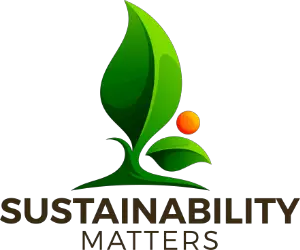
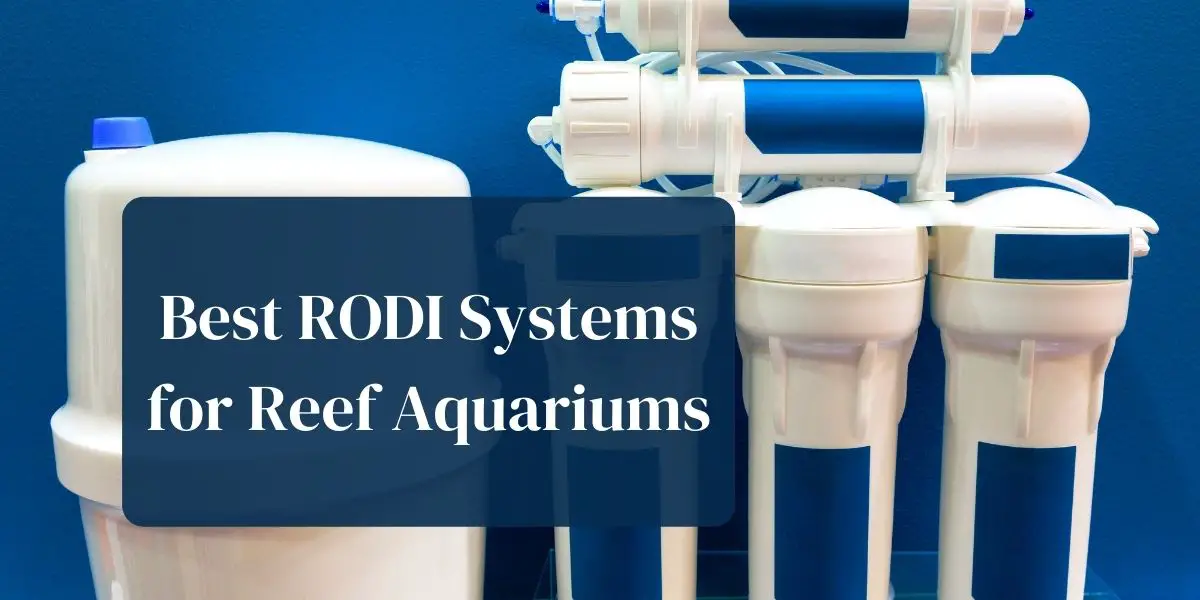












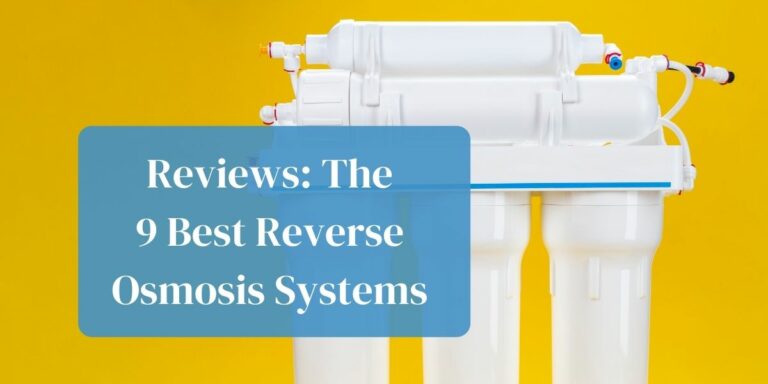
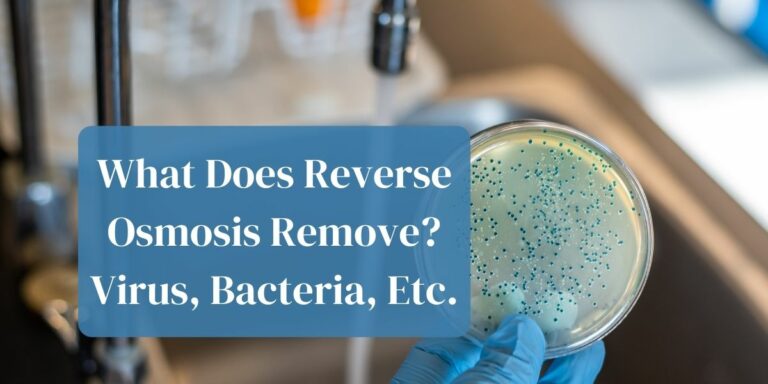
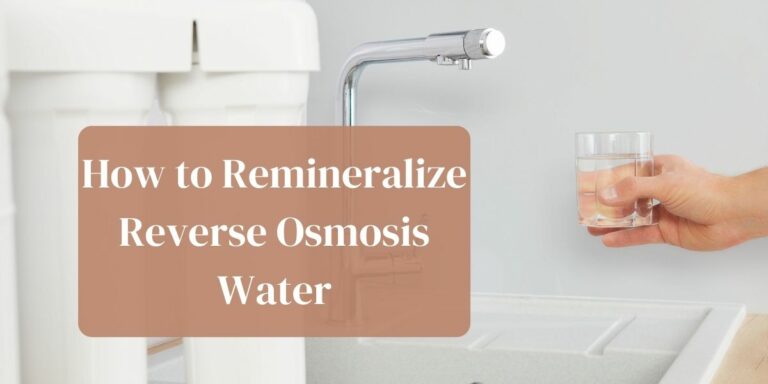
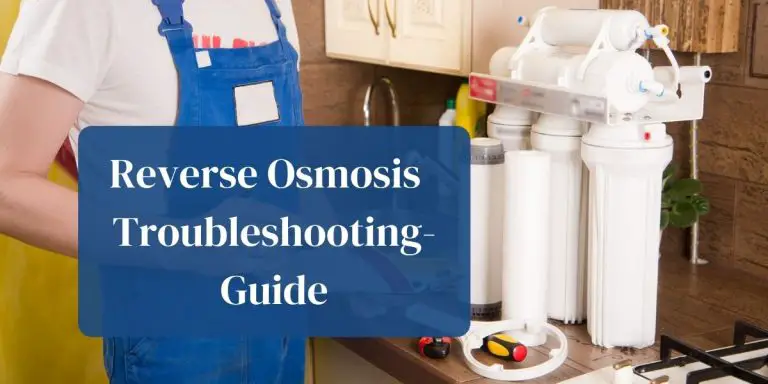
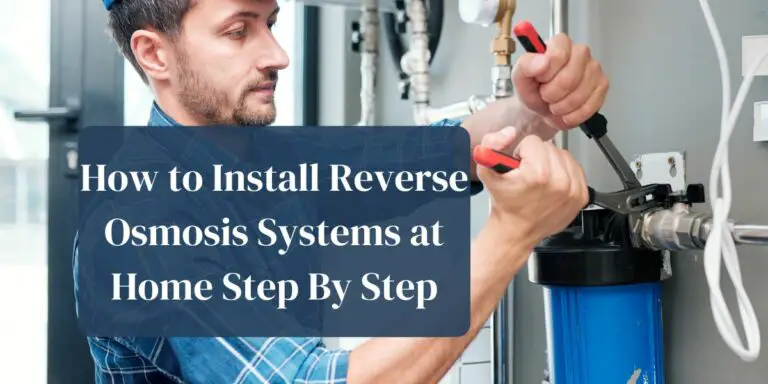
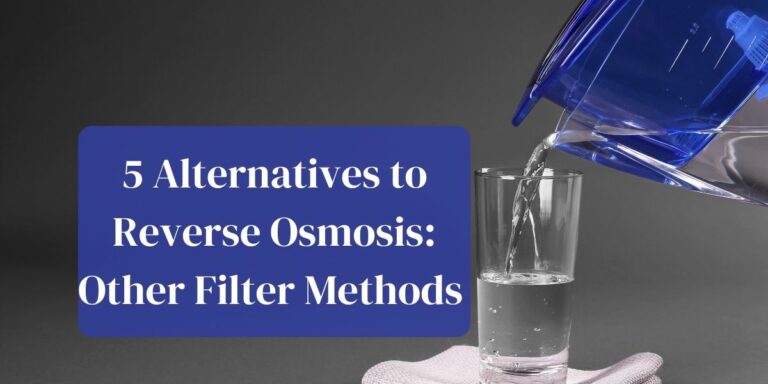

I love FOUNTAINHEAD Water System RO/DI Reef System, was trying to get one that I could use for my aquarium that wouldn’t break my budget and this was the best option at the time. Set-up was very easy despite the unusual configuration I had to use to get this to my aquarium. All fittings are still water tight. never leaked, including the waste fitting.